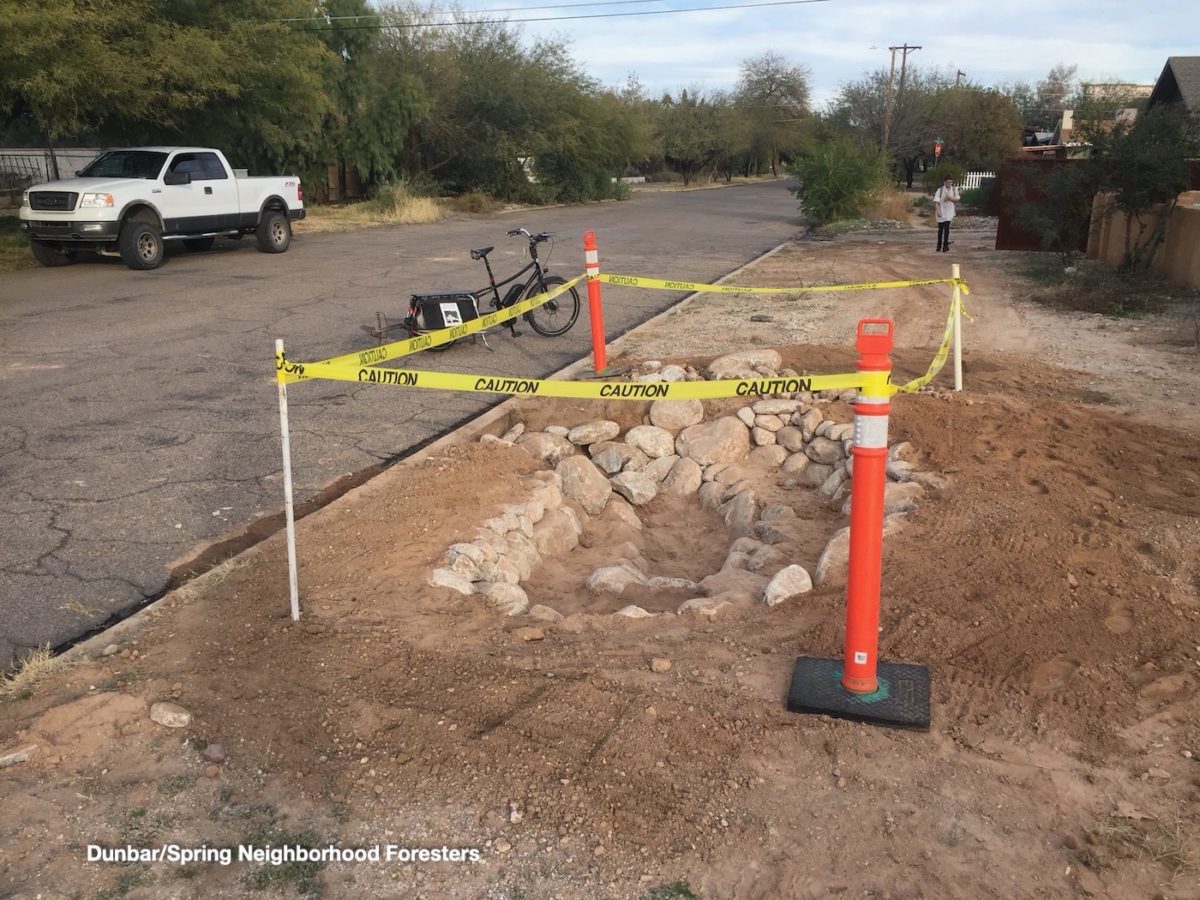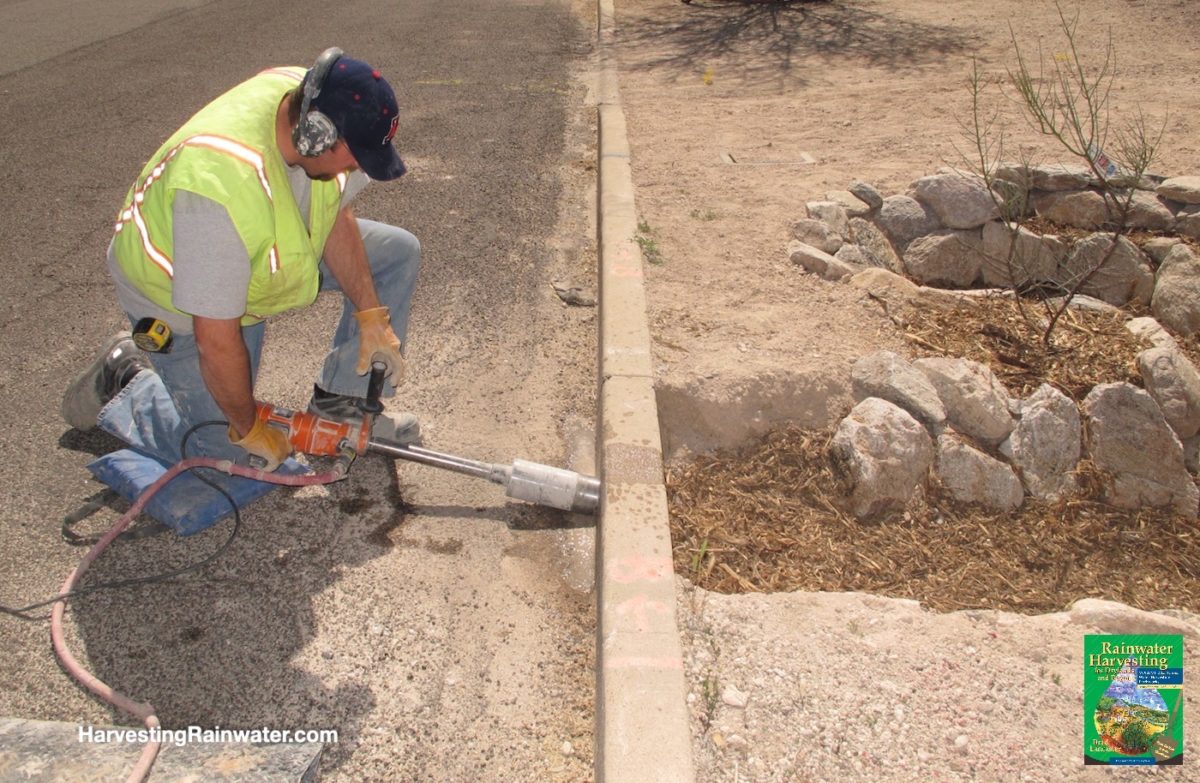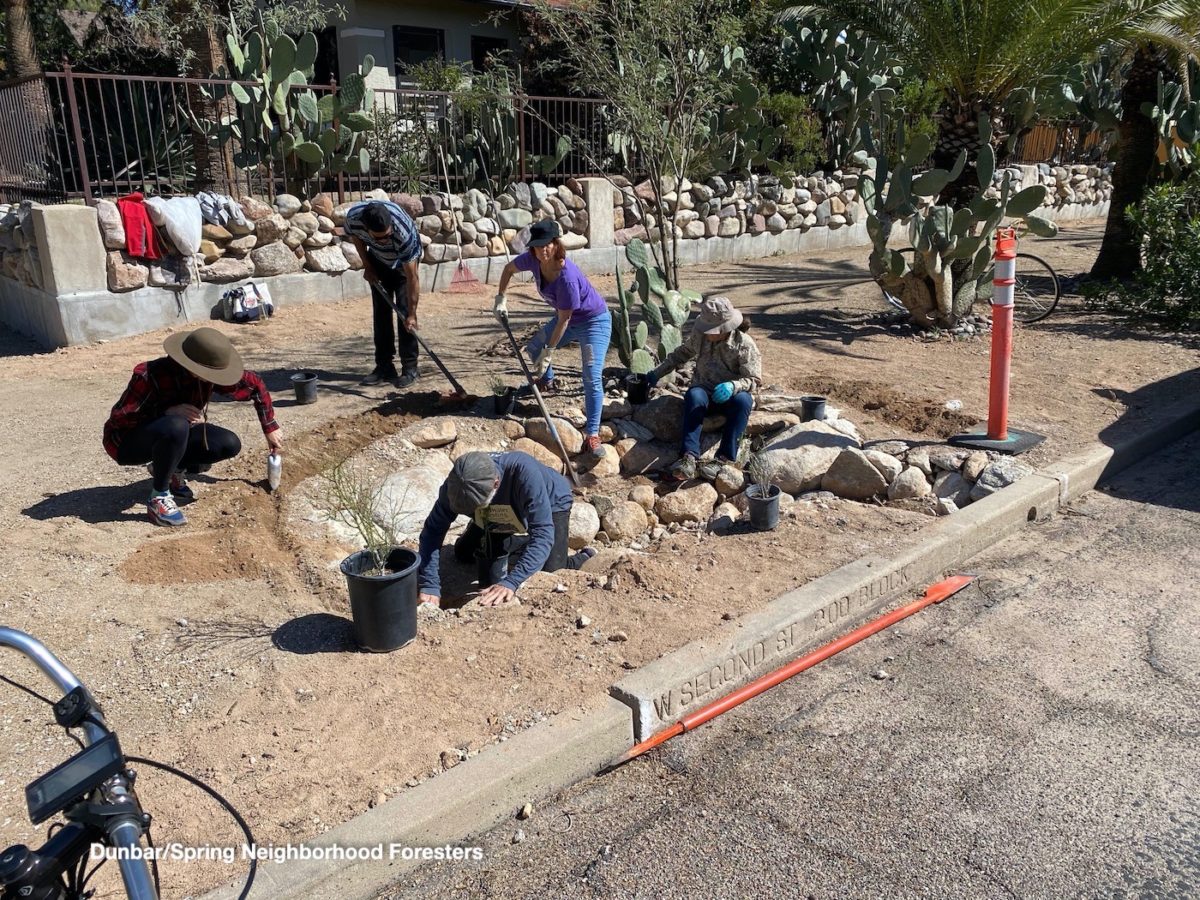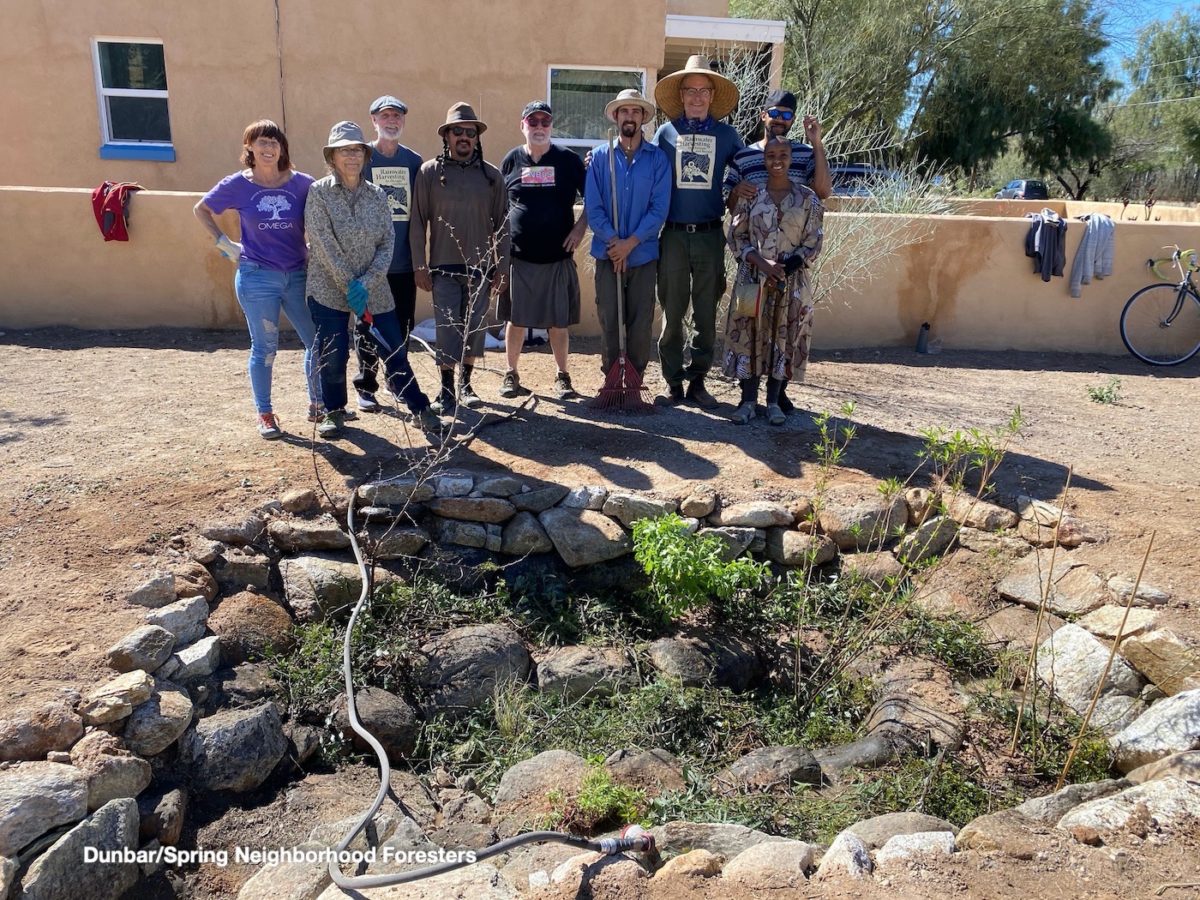Planting the rain is done on different scales based on the site, the available resources, and the needs.
Our annual Neighborhood Rain, Tree, and Understory Plantings plant a much higher volume of water and vegetation per basin than a Work & Learn party in a way that makes a greater number of plantings regenerative (giving back more resources than they consume) as opposed to degenerative (consuming more resources than they generate). So, rain alone can provide all irrigation needs of more associated plantings once they are established, while also reducing downstream flooding.
On average, over 1 million gallons of rain falls in a year on every one-mile length of neighborhood street in Tucson. That is enough water to sustain over 400 native, low-water-use trees per mile, or one tree every 25 feet on both sides of the street—if we direct that water to street-side basins instead of the storm drain. By doing so, we can sustainably grow a continuous canopy of shade on both sides of the street; while also helping recharge, rather than deplete, our groundwater.*
* “Rainwater Harvesting for Drylands and Beyond, Volume 2, 2nd Edition” by Brad Lancaster
At our our annual Neighborhood Rain, Tree, and Understory Plantings we work with city officials to permit, and local contractors to excavate, the high-volume planting basins (averaging 8’ long x 5’ wide x 1’ deep), which on average can each harvest over 4,500-gallons of stormwater per year. As part of this work, the contractors also haul away the excavated soil, do the bank-stabilizing rockwork, create planting terraces, and drill core holes in the street curb to direct street runoff to the street-side basins. By working with this team we help build understanding and capacity among city staff and commercial contractors and crews to help create, rain-irrigated native food forests in our neighborhood and all others where they may then work. Over the years we’ve also worked with city staff to streamline the permitting process for neighborhood foresters/volunteers to coordinate such plantings.
And by coordinating work among multiple sites in the neighborhood we are able to bring down costs for all, and also provide additional services while the contractors and their equipment are here—such as removal of barriers to pedestrian access in public pathways, such as loose gravel and landscape mounds.
We train and coordinate volunteer planting crews to plant the basins. The adjoining property owners agree to steward these plantings, and Neighborhood Foresters’ Work & Learn Stewarding Parties and workshops help build their capacity to do so.
See here for more info on our annual Neighborhood Rain, Tree, and Understory Plantings and how you too can organize one.

Photo: Brad Lancaster

Photo: Brad Lancaster

Reproduced with permission from “Rainwater Harvesting for Drylands and Beyond, Volume 2, 2nd Edition” by Brad Lancaster

Photo: Brad Lancaster


Photo reproduced with permission from “Rainwater Harvesting for Drylands and Beyond, Volume 2, 2nd Edition” by Brad Lancaster
For some hands-on experience
• Sign up to be notified of our events
